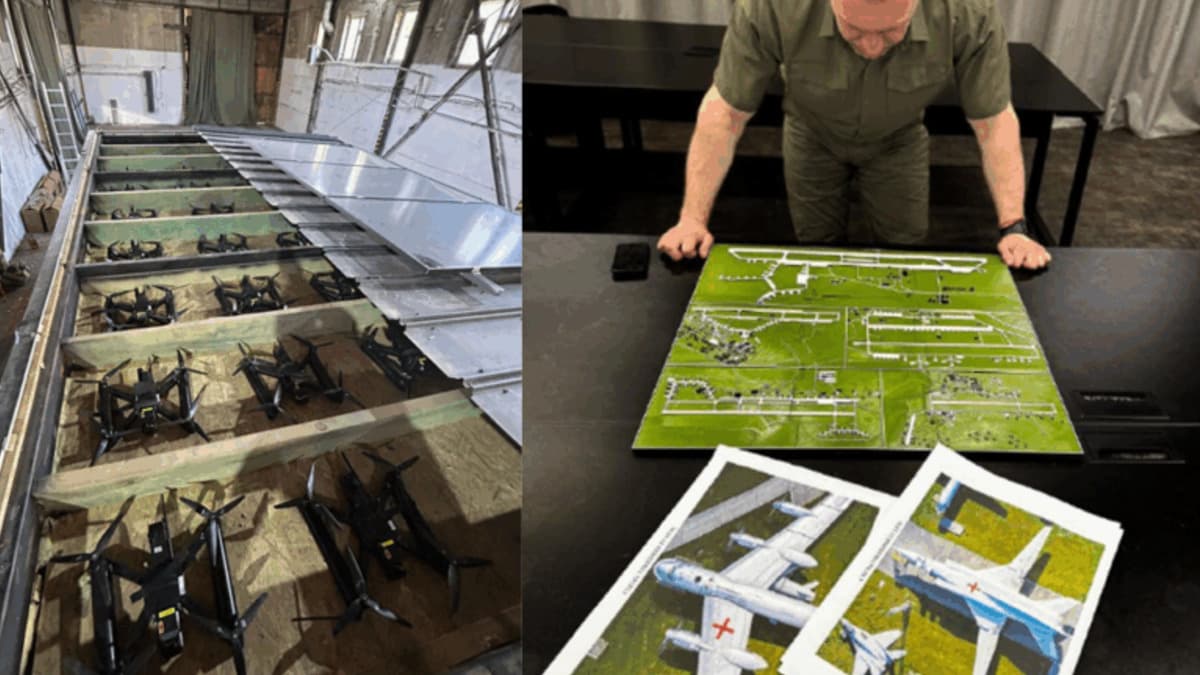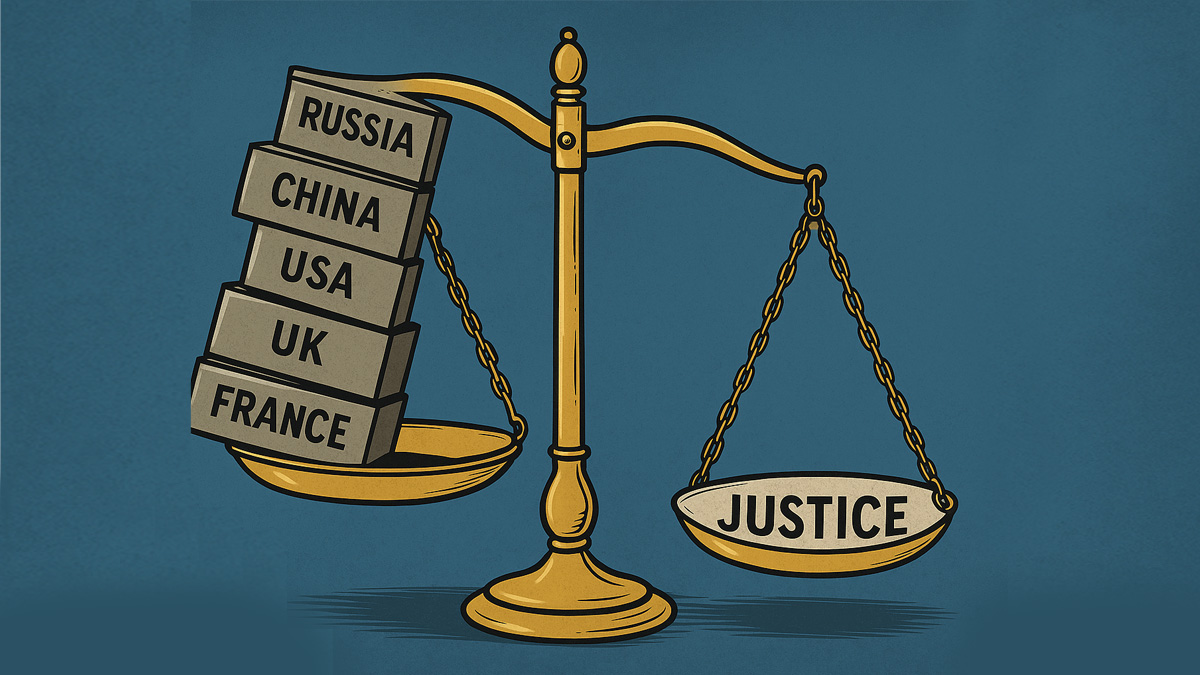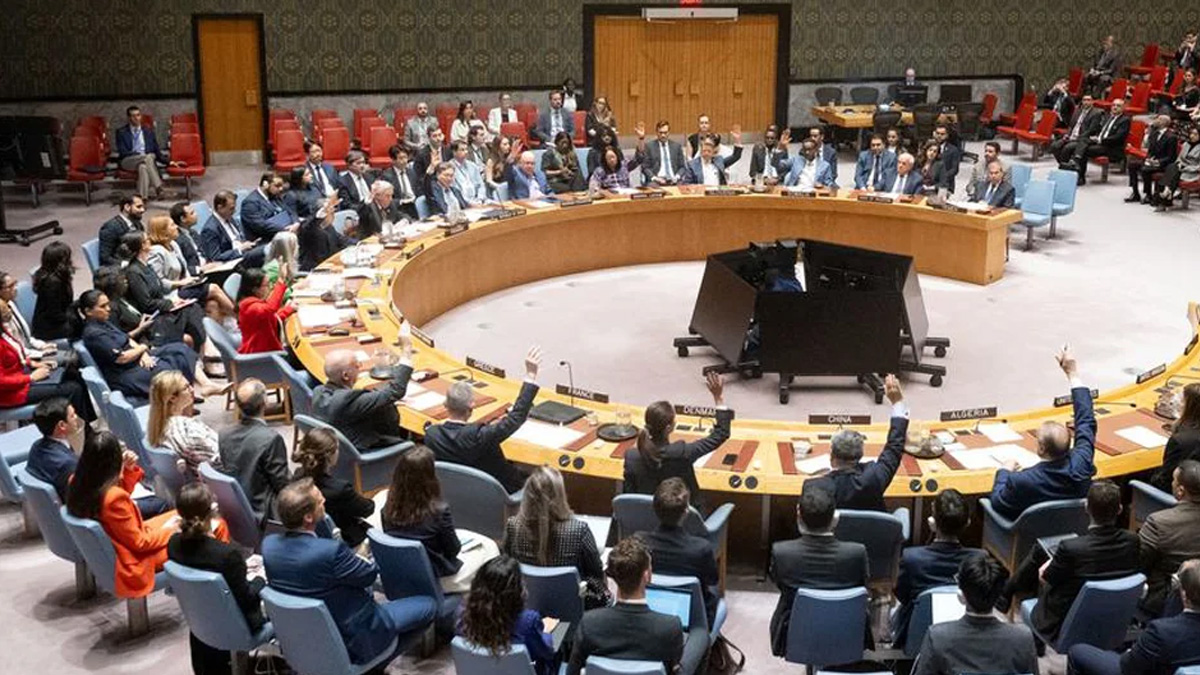Ukraine claims responsibility for massive drone strike destroying 40 russian bombers
Ukraine has claimed responsibility for one of its most far-reaching military operations to date, a drone offensive that it says destroyed more than 40 Russian aircraft across multiple regions. The coordinated strike, launched just hours before scheduled peace talks in Istanbul, is being described as a major blow to Russia’s long-range bomber fleet.

- Ukraine claims responsibility for drone strikes destroying 40+ Russian aircraft on 1 June.
- Operation “Web” involved 117 drones, reportedly hidden in modular wooden houses and trucks.
- Targets included Tu-95 and Tu-22M bombers, as well as A-50 surveillance aircraft.
Ukraine has claimed responsibility for a sweeping drone strike that it says destroyed more than 40 Russian aircraft in one of the war’s most daring operations yet.
According to the Security Service of Ukraine (SBU), the offensive—codenamed “Web”—was carried out on 1 June 2025 after nearly 18 months of covert planning. The strikes targeted military airfields across Murmansk, Irkutsk, Ivanovo, Ryazan, and Amur, regions spanning thousands of kilometres from the front lines.
President Volodymyr Zelenskyy confirmed the attack in his evening address, saying Ukraine had deployed 117 drones in the mission, which was conducted independently without NATO or US support.
How the strike was executed
The Associated Press quoted a senior Ukrainian official who said the operation relied on drones hidden inside modular wooden houses and mounted on trucks with retractable roofs. At a preselected moment, the drones were remotely activated and launched toward Russia’s long-range bombers.
The primary targets included Tupolev Tu-95 and Tu-22M bombers—aircraft frequently used to fire cruise missiles into Ukraine—as well as the A-50 early-warning planes critical to Russian aerial operations.
Ukraine’s SBU estimated that 34% of Russia’s missile bomber fleet had been destroyed, with losses amounting to about US$7 billion. Independent verification has not yet been possible.
Footage circulating on social media, some apparently from Russian sources, appeared to show drones launching from container-like structures, triggering panicked responses on the ground.
Russia confirms damage, but downplays impact
Russia’s Defence Ministry acknowledged that multiple bases had been struck and that fires had broken out, though it claimed many drones were intercepted. Officials reported no casualties and said several suspects had been detained in connection with the operation.
The Irkutsk strike drew particular attention, given its distance of more than 4,300 kilometres from Ukraine—demonstrating the unprecedented range of Kyiv’s capabilities.
Global reactions
US Defence Secretary Pete Hegseth was briefed during a visit to Nellis Air Force Base. An unnamed senior Pentagon official described the operation as showing “a level of sophistication not seen before.”
Retired Australian Major-General Gus McLachlan praised the ingenuity behind the strikes, noting that each drone may have cost as little as US$4,000 while collectively inflicting billions in damages. He suggested such tactics could reshape how modern militaries approach cost-effective warfare.
Peace talks overshadowed
The strikes came just hours before Ukrainian and Russian delegations were due to meet in Istanbul on 2 June for new peace talks. Defence Minister Rustem Umerov will lead Ukraine’s team, with a draft memorandum already submitted to Moscow. The contents remain undisclosed.
Despite the diplomatic context, the Kremlin also escalated attacks the same day, launching 472 drones and seven missiles against Ukrainian targets. One missile strike on a training unit killed 12 service members and injured more than 60. Following the attack, Ukrainian commander Mykhailo Drapatyi—once credited for spearheading key operations in 2022—resigned from his post.
Meanwhile, reports emerged of overnight explosions in Russia causing two train derailments and the collapse of two bridges, though official accounts later omitted references to blasts.
Analysts: a “black day” for Russian aviation
Aviation expert Valeriy Romanenko told Reuters that the strike could mark one of the most significant blows to Russia’s air force since the start of the war.
“Even small, inexpensive drones can exploit weak spots such as fuel tanks,” Romanenko explained. “That’s how a few kilograms of payload can destroy multi-million-dollar bombers.”
As talks open in Türkiye, the timing and scale of the Ukrainian operation underline Kyiv’s determination to reshape the battlefield—and the negotiating table—on its own terms.








0 Comments